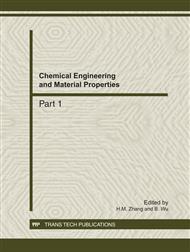p.180
p.184
p.189
p.195
p.200
p.204
p.209
p.214
p.219
Preparation and Combustion Properties of Sepiolite/LDPE Composites
Abstract:
The intumescent flame retardant poly-pentaerythritol diphosphonate dichloride- hexamethylendiamine (PSPHD) grafting sepiolite (PSPHD-SEP) and LDPE/PSPHD-SEP/IFR composites have been prepared. Cone calorimeter technique was employed to characterize the combustion behavior of LDPE/PSPHD-SEP/IFR composites. The results show that the peak and average heat release rates decreased significantly when 5% PSPHD-SEP was added in LDPE. The PSPHD-SEP can promote the char layer to form earlier and be more compact and increase the char residue yield. The compact char residue layer can prohibit the transfer of gas and heat during the burning, showing the improvement of flame retardance.
Info:
Periodical:
Pages:
200-203
Citation:
Online since:
December 2011
Authors:
Keywords:
Price:
Сopyright:
© 2012 Trans Tech Publications Ltd. All Rights Reserved
Share:
Citation:


